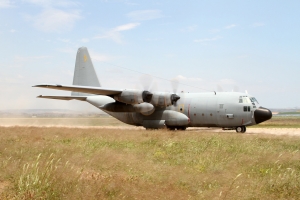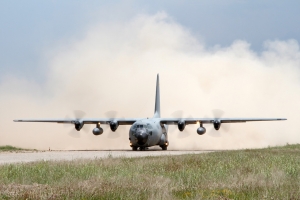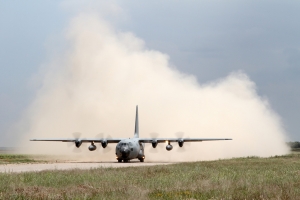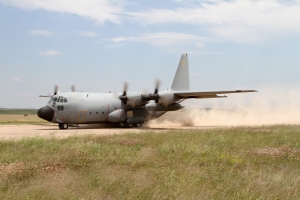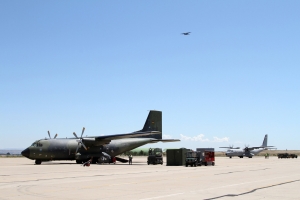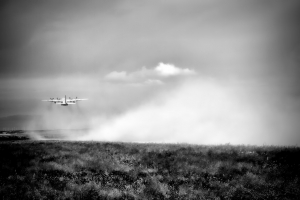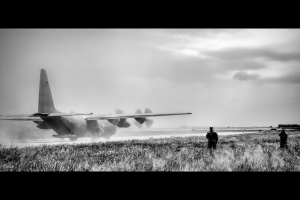European Air Transport Training 2013 (EATT13), organised by the European Defence Agency (EDA) in co-operation with the European Air Transport Command (EATC), is currently being hosted at Zaragoza Air Base, Spain, from 9 to 21 June. Karl Drage reports.
Now in its second year, EATT was introduced to give air transport crews from across Europe the opportunity to train together as now, more often than not, they are required to co-operate and fly with one another while on operations. As with the first edition of EATT, Spain is once again acting as host nation with the cost of staging the exercise being shared between participating countries.

© Karl Drage – www.globalaviationresource.com
Tactical Leadership Program (TLP), the US-led ‘Flag’ series of exercises and the vast majority of other NATO exercises are primarily geared towards the fighter community, and it was felt that an exercise such as EATT would be of great benefit to air transport operators across Europe. The stated aim is to increase interoperability in the air transport area by allowing crews to train for different tactical airlift missions in an international environment.
The foundations for EATT were set out in 2011 when the European Air Transport Fleet (EATF) partnership was created to help standardise airlift processes and procedures. Since then, the European Air Transport Fleet (EATF) Ad Hoc Working Group Operations & Training (AHWG & OT) has worked alongside individual nation operators to develop a number of projects designed to increase the range of opportunities member nations have to train together and exchange best practices, of which EATT is one.

© Karl Drage – www.globalaviationresource.com
To date 20 nations have signed up to EATF: Austria, Belgium, Bulgaria, Czech Republic, Germany, Greece, Finland, France, Hungary, Italy, Lithuania, Luxembourg, Netherlands, Norway, Poland, Portugal, Romania, Slovakia, Spain and Sweden. It is hoped that that number will increase in the short-term.
EATT13 is supported by the EATC in Eindhoven and has eight member states taking part (the active Norwegian participation was cancelled at a very late stage), totalling some 350 air and ground personnel.

© Karl Drage – www.globalaviationresource.com
Nations with aircraft and aircrews deployed are:
Belgium (one C-130H, two crews – from 15 Wing at Brussels/Melsbroek)

© Karl Drage – www.globalaviationresource.com
Czech Republic (one CN-295, two crews – from 24.zDL at Kbely )
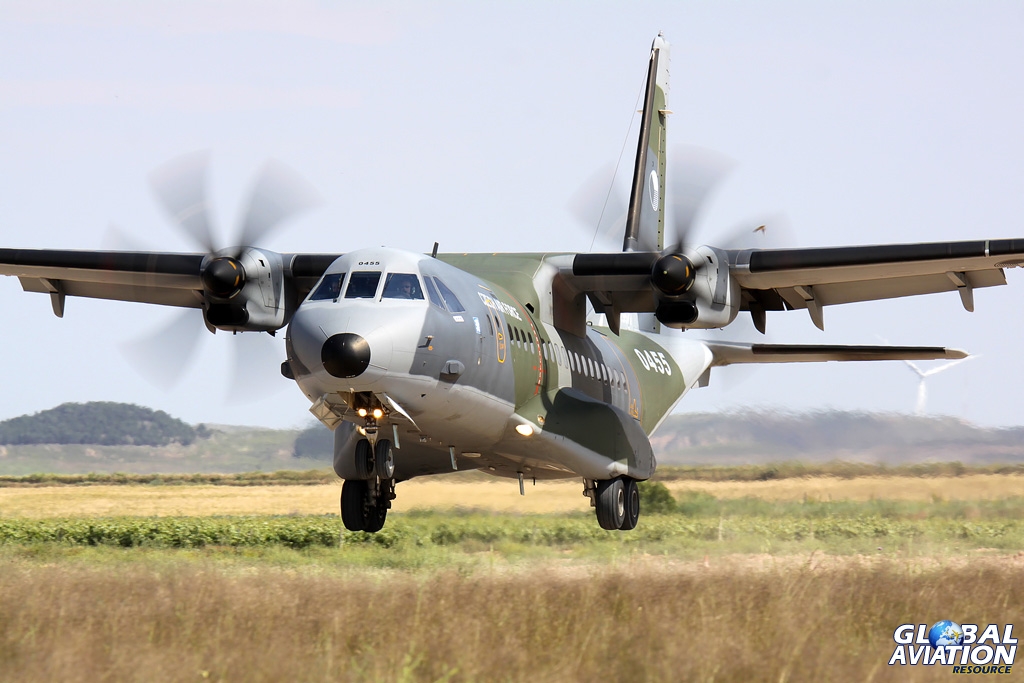
© Karl Drage – www.globalaviationresource.com
France (one C-130H – from ET.061 at Orleans/Bricy – & one CN-235-300 – from ET.062 at Creil – four crews in total)

© Karl Drage – www.globalaviationresource.com

© Karl Drage – www.globalaviationresource.com
Germany (three C-160Ds, three crews – one from each of LTG-61 (Landsberg AB), LTG-62 (Wunstorf AB) & LTG-63 (Hohn AB))
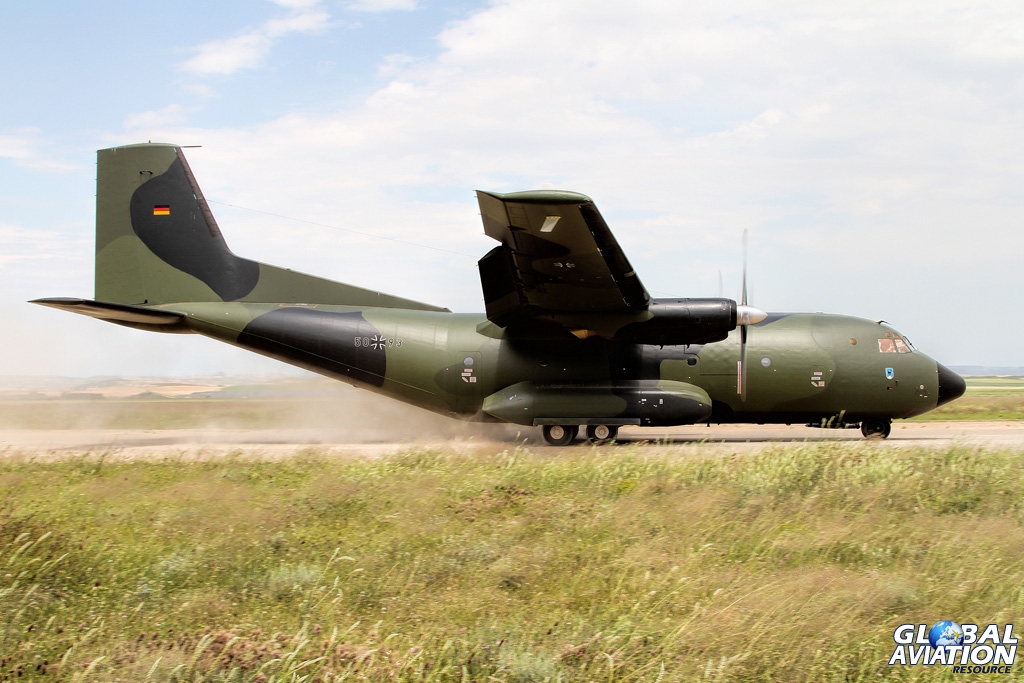
© Karl Drage – www.globalaviationresource.com
Italy (one C-27J, two crews – from 46 BA at Pisa)
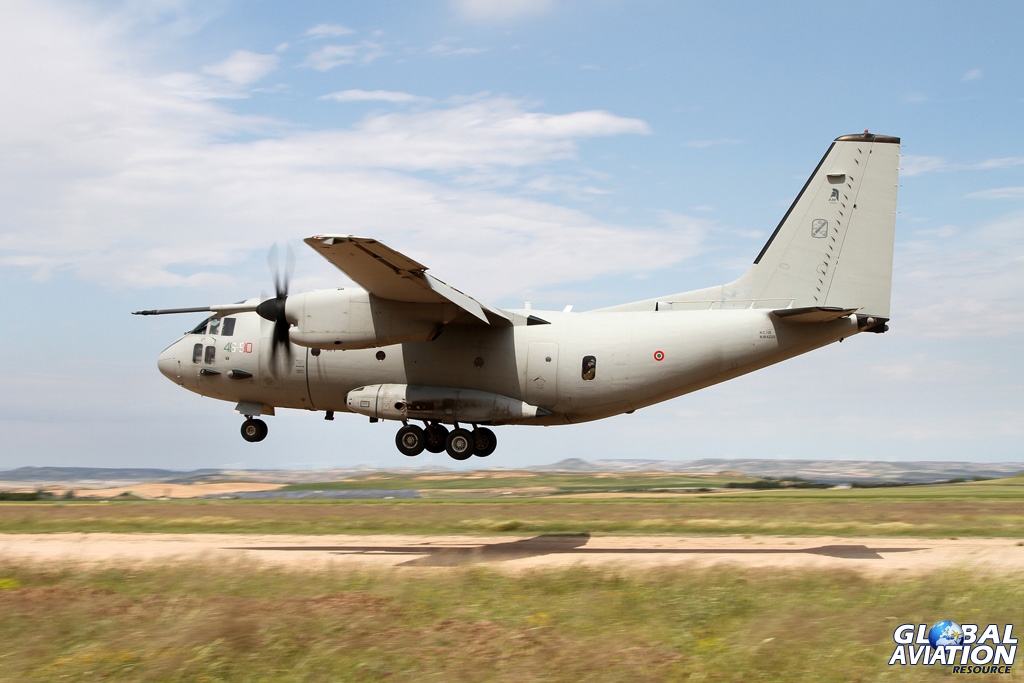
© Karl Drage – www.globalaviationresource.com
Netherlands (one C-130H, two crews – from 336 Sqn at Eindhoven)

© Karl Drage – www.globalaviationresource.com
Spain (one C-130H – from Ala 31 at Zaragoza – & one CN-295 – from Ala 35 at Madrid-Getafe – four crews in total)
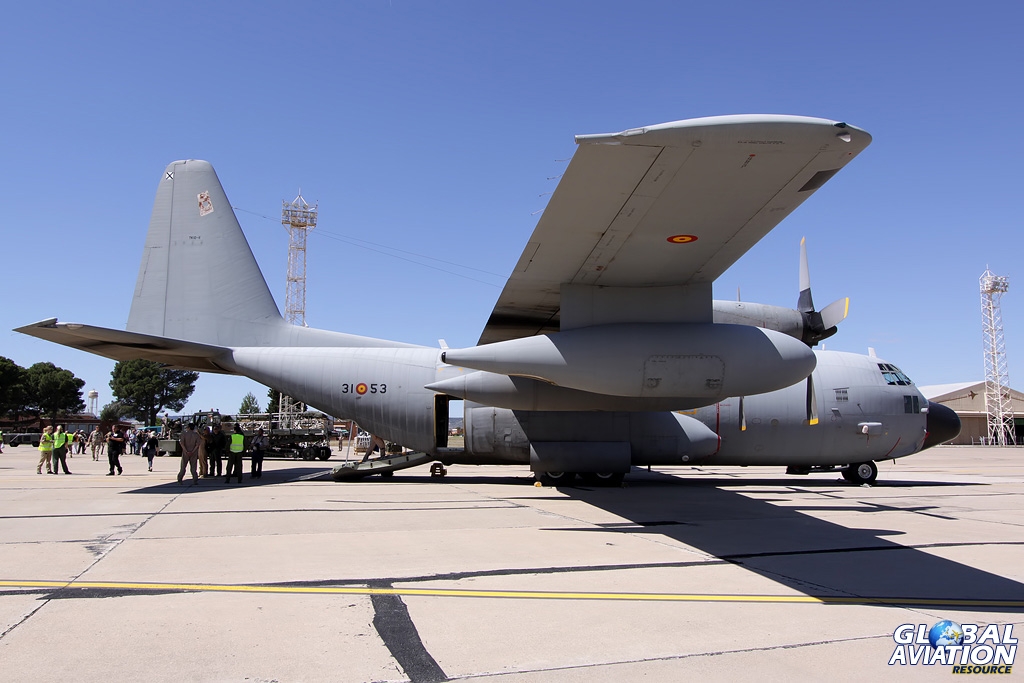
© Karl Drage – www.globalaviationresource.com

© Karl Drage – www.globalaviationresource.com
Sweden (two C-130Hs, two crews – from F 7 Såtenäs)

© Karl Drage – www.globalaviationresource.com
The Spanish Air Force is also supplying Eurofighter EF2000 and F/A-18 Hornets and the French Air Force is providing Rafale and Mirage F1s in Red Air roles. Furthermore, participating crews will co-ordinate activities with a French Air Force E-3F AWACS and take on fuel from an Italian Air Force KC-767 tanker during certain missions, thus increasing the realism and value of the training.
Additionally, observer teams are present from Bulgaria, Finland, Greece, Luxembourg, Norway, Portugal, UK and the US, and it is hoped that some of these nations will take an active role in future exercises.

© Karl Drage – www.globalaviationresource.com
Across the two-week period EATT13 is staged, the complexity of the missions the crews face is steadily developed from single-aircraft sorties at the start right through to the ultimate goal of planning and executing a COMAO (COMposite Air Operation) mission.
EATT is intended to consolidate skills in: advanced mission planning, cargo and personnel airdrops, tactical navigation with ‘time on target’ (TOT) and threat reactions, tactical air land operations (including tactical recoveries, substandard field operations and engines running on and offloads), short field landings, formation flying, night operations, evasion, aeromedical evacuation, as well as to standardise procedures among tactical aircraft operators to enhance interoperability.
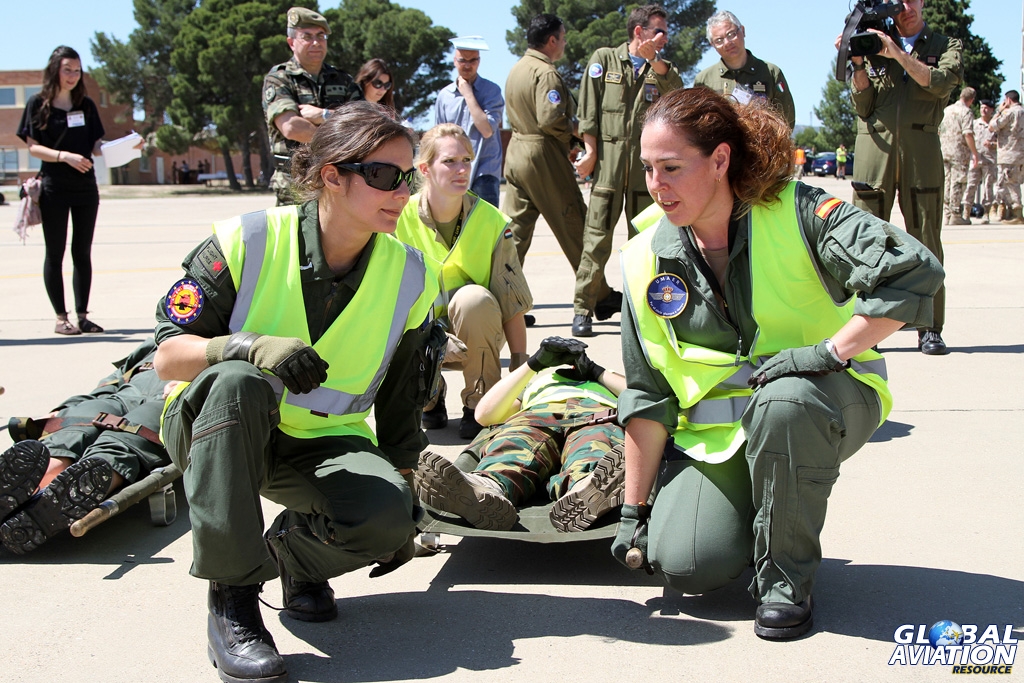
© Karl Drage – www.globalaviationresource.com
Further, EATT13 is intended to test a multinational air transport intelligence cell and a multinational cross-services maintenance programme.
During his opening address at the Distinguished Visitors Day – held at Zaragoza Air Base on 12 June – General Francisco Javier Garcia Arnaiz, the Spanish Air Force Chief of Staff said:
“Apart from standardising tactics, techniques and procedures, this EDA initiative is the best tool to enhance the relationship among all the actors involved in creating doctrine, planning, directing and executing the air plans for now.

General Francisco Javier Garcia Arnaiz (nearest the camera), the Spanish Air Force Chief of Staff, and the Commander of the Bulgarian Air Force, Major General Constantin Veselinov Popov © Karl Drage – www.globalaviationresource.com
“The linked structure allows the preparation of the EATT and the foundations for a network that allows us to share information, to strengthen relationships and to collaborate in order to define the next phase we want for our aviation in the medium and long-term.
“The Spanish Air Force, even in these times of economic restrictions, is fully committed to EDA and the exercises. Therefore, we will continue to support the EDA initiatives next year.
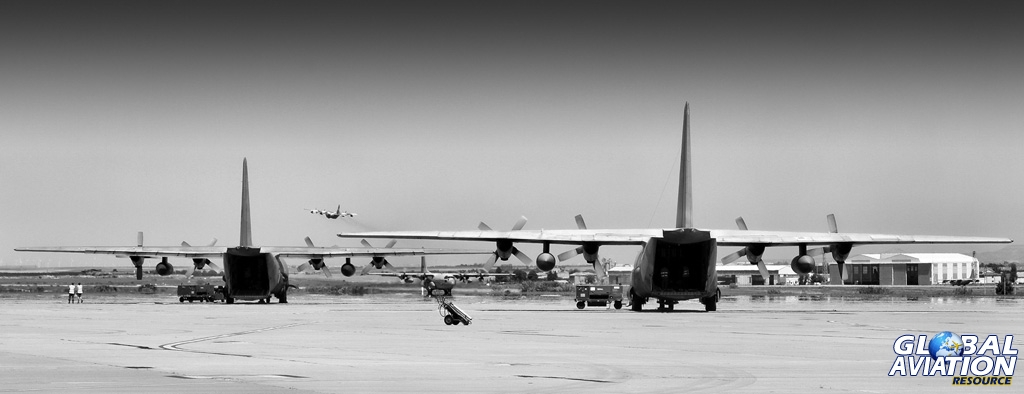
© Karl Drage – www.globalaviationresource.com
“I want to make a special mention of the people working on the Spanish Air Force staff and Spanish Air Combat Command, and mainly the Air Mobility Command here, who have worked real hard to plan, prepare and conduct this training event. I hope their effort will be much appreciated by the participants through a challenging and productive flight programme.
“For me as the Spanish Air Force Commander, it is a pleasure to receive all the authorities here, supporting our efforts to make this event a big success.

© Karl Drage – www.globalaviationresource.com
“Thank you all for your work and for being here.”
Rini Goos, Deputy Chief Executive at the European Defence Agency, said:
“Today’s operations are multinational ones. It is thus imperative that our trainings are as well. This second transport aircraft flying event has just begun but it is already a success. Compared to last year, we have more nations, more aircraft, more crews and more sorties.”

© Karl Drage – www.globalaviationresource.com
As well as EATT, an annual European Air Transport Symposium is held, and, from 2014, a European Advanced Airlift Tactics Training Course (EAATTC) is planned, as Lieutenant Colonel Jose Almodovar from the Spanish Air Mobility Command, Exercise Director for EATT13, explained:
“Managing military budgets is quite difficult and complex for all European countries; joint operations are more common. Consequently, European projects and initiatives in this area must be focused on carrying out multinational air transport training programmes with pooling and sharing as a priority, followed by the standardisation of procedures, tactics, techniques and cross-servicing activities.
“We can affirm that EATT13 is a clear example of this kind of initiative; the motto is ‘Training together to operate together,’ with the aim to increase interoperability of European aircrews and fleets based on common procedures. The objective is to create a European Advanced Air Tactical Transport Course (EAATTC) similar to the American one and following the philosophy of the Tactical Leadership Programme (TLP).”

© Karl Drage – www.globalaviationresource.com
Lieutenant Colonel Laurent Donnet, EDA Assistant Capability Manager Manoeuvre and Deputy Exercise Director, told the assembled audience – which also included the chiefs of the air staff of Bulgaria and Lithuania – that:
“The advantage of EATT is that the training is tailored to the participant’s requests. No disciplines or events are imposed on the crews and the entire flying programme is scheduled in such a way that each participating crew will get the specific training it needs. This flexibility makes EATT probably so attractive.”

The Commander of the Lithuanian Air Forces, Major General Edvardas Mažeikis (left), the Commander of the Bulgarian Air Force, Major General Constantin Veselinov Popov and Lieutenant Colonel Jose Almodovar from the Spanish Air Mobility Command, Exercise Director for EATT13 (right), listen in to a brief from the German Air Force © Karl Drage – www.globalaviationresource.com
Donnet also explained that since its inception in 2012, the increase in participation is going to mean a somewhat different approach will be needed for 2014:
“Where last year we had six nations and eight aircraft participating, we have eight nations and twelve aircraft this year. Last year we had fourteen sorties a day, this year twenty-two. In a way we are a victim of our success. Looking at the detachment size it goes from 250 to 350 people. In order to cope with this massive increase in numbers we will organise two events as from next year. One will again be in Spain (EAATTC), the other one in Bulgaria (EATT).”
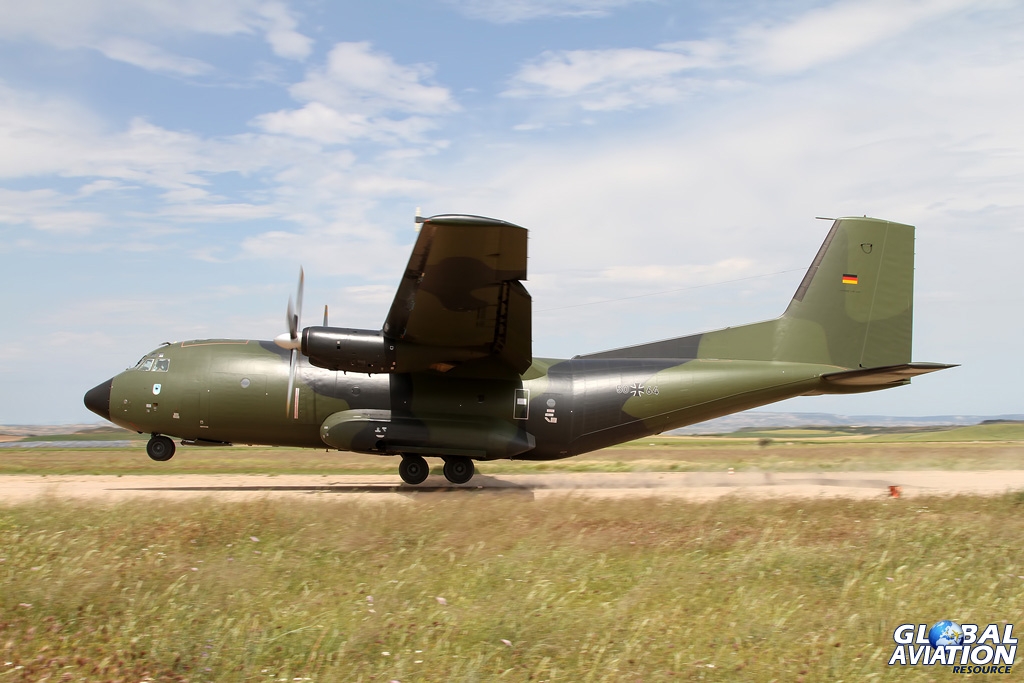
© Karl Drage – www.globalaviationresource.com
The long-term plan to 2019 anticipates a gradual increase in events towards a single EATT exercise supplemented by no fewer than four EAATTC courses, at which point the system will be considered to be fully operational. It is hoped that one or two permanent locations can be utilised to deliver the combined package of events.
The onus falls on the host nation to lead and support the planning activities while the EATC provides the expertise in relevant fields such as training, intelligence and maintenance. EDA, which was established in 2004, supports the Council and member states with their efforts to improve the EU’s defence capabilities, and, as such, has the ability to interact with national authorities at a sufficiently high level to encourage them to support these initiatives.
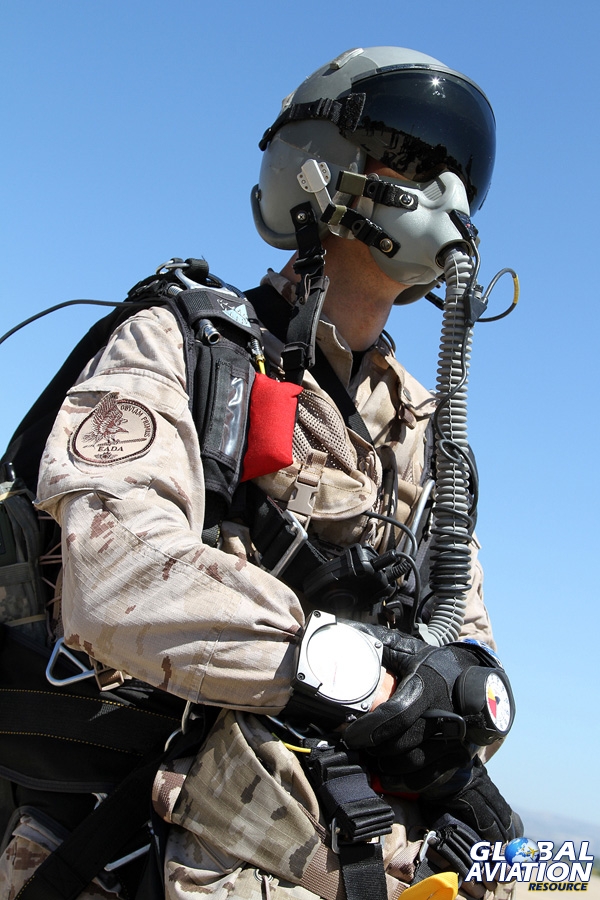
© Karl Drage – www.globalaviationresource.com
In addition to creating the EATF, EDA has been heavily involved with boosting the availability of helicopters within member nations and working on plans to allow UAVs to operate within normal airspace.
While EATT will continue to deliver flexible training objectives to participating crews based on national priorities, EAATTC will operate to a fixed syllabus. EATT’s scope means that it exists not only to deliver high-value training to aircrew but also to other vital disciplines within the air transport sphere, such as maintenance, intelligence and air engineering. EAATTC, meanwhile, will place far greater emphasis on the pure flying aspects of operations.
By the end of EATT13, each crew will have flown seven sorties including at least one night mission and at least two in a multi-aircraft package.

© Karl Drage – www.globalaviationresource.com
On-board each aircraft will be one of 14 mentors from the member nations or a further three from the EATC. The mentors are experts within the air transport domain and, as well as imparting their knowledge and expertise to the crews, outside of the EATT environment they also act as relays between the EATC and member nations to encourage them to incorporate EATT/EAATTC into their training programmes.
Once EAATTC is online, these mentors will assume the role of instructor pilots during those courses.

© Karl Drage – www.globalaviationresource.com
Each EATT13 mission follows the same basic route with the aircraft departing from Zaragoza Air Base at pre-determined intervals. After heading south at low-level, they might encounter the previously mentioned airborne threats before heading north towards the gravel strip at Ablitas where short-field landings have been taking place – a location that very accurately mirrors conditions at some of the more austere airfields in Afghanistan.
These landings could include medical evacuation elements or simply provide rough-field operating experience.

© Karl Drage – www.globalaviationresource.com
The Czech Air Force CASA CN-295 suffered a puncture when a sharp stone pierced a tyre during one of its missions to Ablitas and forced the closure of the strip until a replacement tyre could be roaded in from Zaragoza. The crew told me that at home they are more used to practising landings on grass strips or concrete runways rather than the type available at Ablitas, and they were acutely aware when the tyre blew due to the violent vibrations they could feel through the airframe.
When airborne again, the aircraft route through the Bardenas Range to the north-east, where they may be engaged by ground-to-air threats before continuing their journey to the San Gregorio training area on the north-western outskirts of Zaragoza. Some of the missions could feature personnel or cargo delivery by parachute, and it is at San Gregorio where these drops would take place.

© Karl Drage – www.globalaviationresource.com
Representing the UK at EATT13 were Air Commodore Dave Lee, the Royal Air Force’s Air Mobility Force Commander, and Wing Commander Stuart Lindsell, Officer Commanding 99 Squadron RAF.
Air Commodore Lee confirmed to me that this was the first time that the UK had been represented at EATT and that it was an event that the Royal Air Force would almost certainly look to support once the on-going operations in Afghanistan, which have placed significant strain on the RAF’s air transport assets, have been concluded.
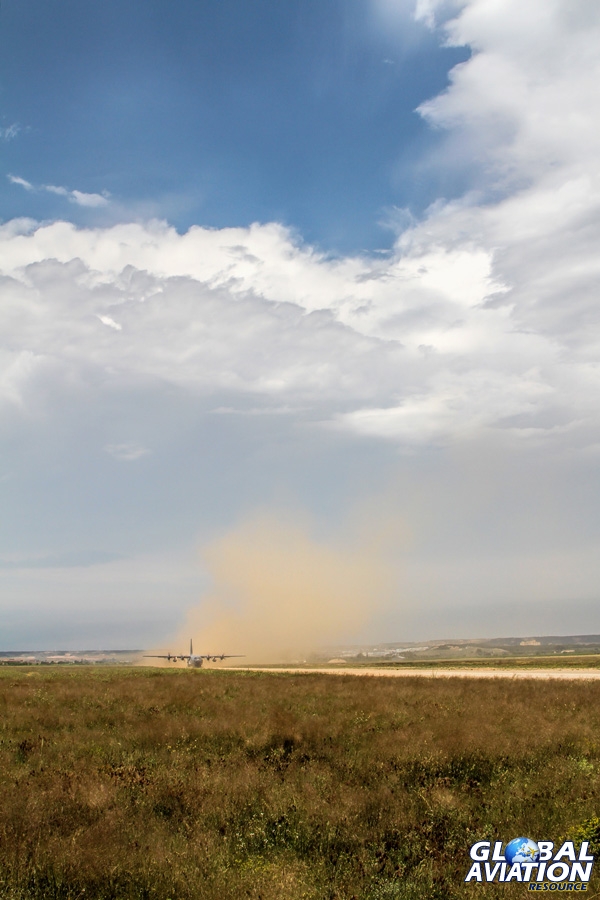
© Karl Drage – www.globalaviationresource.com
Wing Commander Lindsell added that the Afghanistan mission had shifted the focus of training in the UK and that EATT (and its associated spin-offs) could be an extremely useful outlet for reacquiring some of the skills that have needed to be sacrificed as a result.
The over-riding sense of feeling I came away from Zaragoza with was that there is a real belief that what EATC is trying to achieve is desirable, needed and is being well executed. With the lessons learnt from EATT12 and the soon-to-be-concluded EATT13, the next edition – and EAATTC – can only get better still.

© Karl Drage – www.globalaviationresource.com
Karl Drage extends sincere thanks to Capt Jose Guerreira Velicia and all of the staff at Zaragoza Air Base and Ablitas who made this coverage possible.


